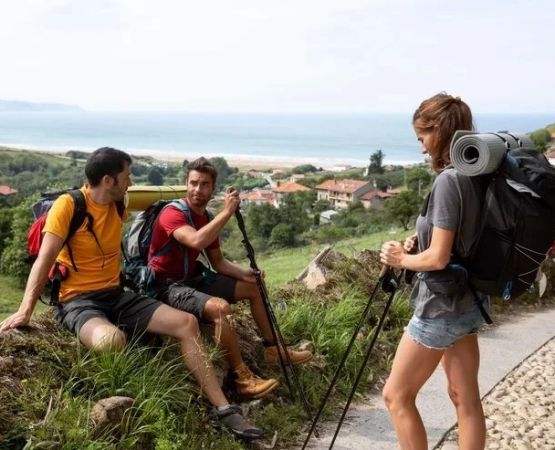- why-star-gazing-campsites-need-special-consideration
- light-pollution-and-how-to-avoid-it
- terrain-and-environment-matter-more-than-you-think
- timing-makes-the-stars-align-literally
- case-study-how-one-family-found-their-perfect-sky-spot
- how-to-prepare-your-gear-and-yourself
- find-the-best-star-gazing-campsites-with-confidence
1. Why Star Gazing Campsites Need Special Consideration
If you’ve ever tried to use a telescope while surrounded by bright RV lights or through a hazy skyline, you already know that not all campsites are created equal. When your goal is to experience the night sky in all its glory, choosing the right location becomes just as important as bringing the right equipment. Tips for finding the best campsite for star gazing with a telescope start with understanding the key elements that make a place truly “star-viewing friendly.”
2. Light Pollution and How to Avoid It
2.1 Understanding Light Domes and Urban Glow
The biggest enemy of stargazing is artificial light. Even if you're an hour away from a city, the light dome can still wash out the sky. The best campsites for telescope viewing are usually located in or near designated “Dark Sky Parks” or rural zones far removed from urban light sources.
2.2 Local Insight: Look for the "Backside" of Parks
One smart tip from experienced campers is to choose a site on the far side of a campground—opposite the main lodge, bathhouses, or parking areas. These are typically quieter and darker. Local stargazers often recommend places like Linville Gorge in NC or portions of the Ozarks where terrain helps shield from ambient light.
3. Terrain and Environment Matter More Than You Think
3.1 The Importance of Open Skies
Trees, cliffs, and ridgelines may be beautiful by day, but they can obstruct celestial views. Look for campsites with wide, open clearings and minimal overhead cover—ideal for setting up telescopes and maximizing sky visibility.
3.2 Elevation and Atmosphere
Higher elevation often means thinner air and less atmospheric interference, which improves viewing clarity. Mountainous areas above 3,000 feet offer cooler, cleaner air—perfect for spotting galaxies, planets, and meteor showers with more detail.
3.3 Wind and Stability
A flat, stable ground surface is essential when using a telescope. Windy hilltops or uneven rocky ground can disrupt telescope alignment and visibility. Check weather patterns for your campsite before you go.
4. Timing Makes the Stars Align—Literally
4.1 Moon Phases and Their Effects
Even in the darkest park, a full moon can wash out the stars. Check the lunar calendar and plan your trip around the new moon if you want optimal viewing of constellations and the Milky Way.
4.2 Seasonal Skies and Events
From the Perseids in August to Jupiter’s closest approach in November, different seasons offer different sky highlights. Apps like Stellarium and SkySafari help forecast celestial events, making it easier to align your trip with peak visibility nights.
5. Case Study: How One Family Found Their Perfect Sky Spot
5.1 The Campbells' First Attempt: A Lesson in Frustration
The Campbell family tried stargazing from a state park near their city, only to find themselves flooded by nearby campsite lanterns and the glow of a distant Walmart. Their telescope picked up more bugs than stars.
5.2 A Turnaround Trip to Pine Cliff
A few months later, they took a recommendation from a friend and visited Pine Cliff Resort. Nestled far from urban light, with designated astronomy-friendly fields, they saw the Andromeda Galaxy for the first time. “We were blown away,” said Mr. Campbell. “It was the first time we realized how dark the night sky could really get.”
6. How to Prepare Your Gear and Yourself
6.1 Telescope Setup Tips
Practice setting up your telescope at home. Know how to align your finderscope and balance your tripod before hitting the trail. Also, bring red-filter flashlights to protect night vision while adjusting your setup.
6.2 Dress for the Drop
Night temperatures can plummet, even in summer. Bring thermal layers, a beanie, and insulated gloves that still allow you to operate fine telescope controls. Campers often forget how cold stargazing can get after sundown.
6.3 Log Your Observations
Bring a notebook or download an astronomy journaling app. Record what you see, the date, weather, and even the telescope settings used. It turns your night into a learning experience—and builds anticipation for the next one.
7. Find the Best Star Gazing Campsites with Confidence
7.1 Let Passion Guide Your Planning
The best tips for finding the best campsite for star gazing with a telescope come from those who’ve been there—fellow amateur astronomers and nature lovers who understand the nuance between a good and great night under the stars.
7.2 Trust Local Expertise
At Pine Cliff Resort, our team regularly assists guests in choosing optimal camp spots for celestial viewing. Whether you’re new to telescopes or a seasoned deep-sky hunter, our grounds are designed with stargazers in mind—so your experience is less guesswork, more galaxy gazing.







